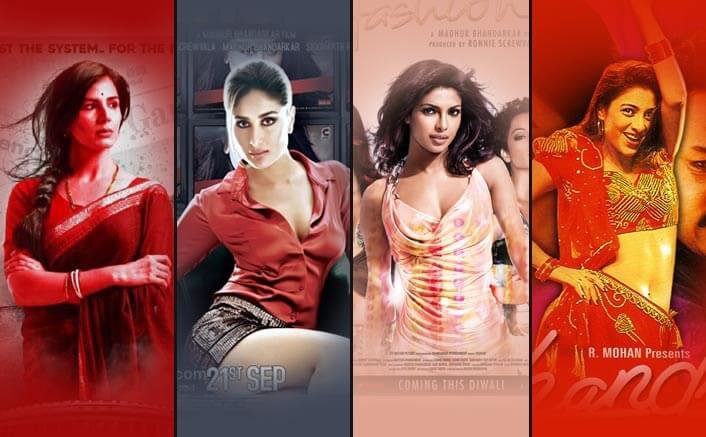
Madhur Bhandarkar, one of India’s most acclaimed directors, has carved out a unique niche for himself with his realistic, socially conscious storytelling. Unlike the typical masala Bollywood films filled with grandeur and escapism, Bhandarkar’s movies delve into the gritty realities and complexities of contemporary Indian society. Known for his hard-hitting narratives and unflinching portrayal of various strata of urban life, his films often spotlight hidden or neglected social issues, rendered through strong character-driven plots.
Bhandarkar’s filmmaking style is marked by meticulous research, grounded characters, and a naturalistic approach, often blurring the lines between fiction and documentary. His cinema is deeply rooted in realism, focusing on themes such as corruption, ambition, survival, and the darker sides of glamour and power. Let’s explore his best movies in detail, elaborating on their themes, significance, and impact.
Chandni Bar (2001)
Chandni Bar is widely recognized as Madhur Bhandarkar’s breakthrough film, establishing him as a director who confronts uncomfortable realities. The movie delves into the harsh world of Mumbai’s bar dancers and the criminal underworld that surrounds them. Through the story of Mumtaz, played brilliantly by Tabu, the film portrays the struggles of a woman forced to lead a life she never chose to have. It highlights broader socio-economic issues, such as poverty, exploitation, and survival, in one of India’s largest metropolitan cities.
The film’s success lies in its authentic depiction—through powerful performances and a gripping narrative—that brought social issue-based cinema into the mainstream. Chandni Bar won several accolades and remains a benchmark for Bollywood’s socially relevant cinema. It also drew attention to the marginalized and often vilified community of bar dancers, sensitizing audiences to their plight.
Page 3 (2005)
Page 3 is an incisive critique of the glitzy yet superficial world of Mumbai’s elite party circuit, framed through the eyes of a young journalist investigating celebrity culture. Bhandarkar pulls back the curtain on the hollow glamor, moral ambiguity, and media façades that dominate high society. The film’s title refers to the society pages in newspapers, symbolic of shallow celebrity gossip.
By blending a journalistic narrative style with layered characters, Page 3 examines the price people pay for fame and power. The film’s critical treatment of societal façades marked a turning point in Bollywood’s storytelling, encouraging more films to examine the media and celebrity culture through a critical lens. It earned national awards and critical acclaim for its sharp writing and incisive social commentary.
Fashion (2008)
Fashion tracks the journey of a small-town girl, Meghna Mathur (played by Priyanka Chopra Jonas), who rises to fame in the ruthless and glamorous world of high fashion, only to face personal and professional downfalls. The film explores themes of ambition, exploitation, betrayal, and vulnerability beneath the glossy façade of the fashion industry.
Kangana Ranaut’s portrayal of a supermodel spiraling into addiction and despair complements Priyanka’s character beautifully, making the film a nuanced exploration of the cost of success and the dark underbelly of an industry obsessed with beauty and fame. Fashion is regarded as one of Bhandarkar’s most nuanced films, combining a sharp critique of the industry with human drama, significantly influencing Indian cinema’s approach to topics related to fashion and women’s psychological struggles.
Corporate (2006)
Corporate delves deep into the cutthroat world of corporate competition in India. It focuses on the ethical dilemmas, betrayals, and moral compromises executives face amid fierce business rivalries. Bhandarkar’s attention to detail and authenticity shine through in the portrayal of boardroom politics, power struggles, and corruption.
What sets Corporate apart is its focus on female ambition and the challenges professional women face in a male-dominated world. Bipasha Basu’s role as a ruthless executive embodies the conflict between personal values and corporate greed, raising questions about ethics and the cost of success in India’s burgeoning economy.
Traffic Signal (2007)
Traffic Signal presents a different, often overlooked, section of Mumbai’s urban landscape—the people who survive around traffic signals, including beggars, street vendors, and hustlers. The film humanizes these background figures, elevating their stories and struggles to the forefront.
Through its sympathetic yet pragmatic lens, Bhandarkar critiques socio-economic systems that perpetuate poverty and marginalization. It serves as a poignant reminder of the vibrant, complex microcosm of urban poverty, revealing how these characters navigate daily life amid systemic neglect. The film is praised for its balanced narrative, which avoids melodrama while evoking genuine empathy.
Satta (2003)
Satta is a hard-hitting political drama showcasing the murky world of power struggles, corruption, and gender dynamics within Indian politics. The story follows a woman who reluctantly enters the political arena, revealing the deep-seated rot and violence beneath the democratic façade.
Satta addresses themes of agency, resilience, and moral decay in governance. With gripping performances and a stark narrative, the film critiques the systemic issues of Indian politics while highlighting the challenges women face in such a hostile environment. Satta remains a relevant commentary on power and corruption in public life.
Jail (2009)
Jail offers an empathetic yet unvarnished look at India’s penal system, focusing on the life of an inmate whose family abandons him. The film explores social stigma, redemption, and the thin line between guilt and innocence, capturing the humanity of prisoners often neglected by society.
Manoj Bajpayee and Neil Nitin Mukesh deliver nuanced performances that bring depth to this rarely explored genre in Indian cinema. Jail challenges the audience’s perceptions of criminal justice and redemption, making it an important film in Bhandarkar’s oeuvre.
Dil Toh Baccha Hai Ji (2011)
Marking a lighter, more commercial turn, Dil Toh Baccha Hai Ji explores urban relationships and the comedic confusion around love and commitment. Though more mainstream than Bhandarkar’s usual socio-political dramas, the film’s witty writing and relatable characters demonstrate his ability to approach romance and comedy without losing his signature observational insight.
This movie showcases Bhandarkar’s versatility as a filmmaker, capable of blending entertainment with insightful storytelling.
Aan: Men at Work (2004)
Aan: Men at Work deals with the struggles of honest law enforcement officers battling political and criminal corruption. While more formulaic and action-oriented than Bhandarkar’s later works, it stands out for its ensemble cast and attempt to blend commercial action cinema with a social message.
The film explores themes of justice, morality, and the personal cost of upholding integrity in a society plagued by crime and power politics. It represents Bhandarkar’s initial efforts in balancing commercial and socially relevant filmmaking.
India Lockdown (2022)
India Lockdown captures the emotional and social upheaval caused by the COVID-19 pandemic. One of Bhandarkar’s most contemporary works, it portrays multiple stories of people affected by lockdown measures, highlighting struggles related to health, livelihood, mental well-being, and family.
Continuing his tradition of humanist cinema, the film offers an insightful cross-section of Indian society facing an unprecedented crisis. It exemplifies Bhandarkar’s commitment to timely, socially relevant narratives that resonate with audiences on a deeper emotional level.
Conclusion
Madhur Bhandarkar’s filmography is a testament to his dedication to realism and socially conscious cinema. His movies are more than just entertainment; they are societal mirrors that reflect the harsh truths, ethical dilemmas, and human stories behind India’s urban tapestry. From bar dancers to fashion models, politicians to prisoners, Bhandarkar’s lens captures diverse facets of life with sensitivity and unwavering honesty.
Through his best movies, Bhandarkar has expanded the language of Indian cinema, creating films that provoke thought, encourage discourse, and inspire empathy. His work continues to influence filmmakers who aspire to combine artistry with social responsibility, making him one of the most significant directors in contemporary Bollywood.



